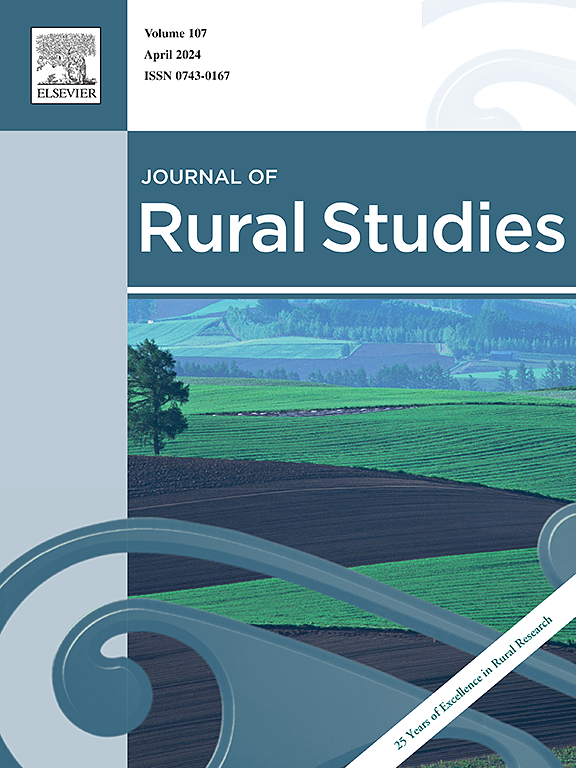谁该对此负责?考察美国农村农业和牧场州的报纸报道水质的方式
IF 5.7
1区 社会学
Q1 GEOGRAPHY
引用次数: 0
摘要
农民和牧场主的生计取决于农业用地和水路质量。然而,化肥使用和大规模养猪场等农业实践威胁着水质和公众健康。农村报纸是指导居民决策(包括他们如何应对水威胁)的主要信息来源,可以在鼓励读者应对当地气候变化威胁方面发挥影响。然而,我们通常不知道农村和地方报纸在报道环境问题时表现如何。我们认为,城乡信息差异延伸到地方报纸向农村受众传递水质信息的方式。因此,我们系统地研究了代表中西部五个类似州农村和城市地区的报纸出版物是如何构建和获取其水质和水污染报告的。内容分析结果发现,水质主要从责任角度出发,强调谁应该对保护水道负责,居住在小地区和农村地区的居民获得的环境新闻主要基于地方和国家政府来源提供的信息。我们发现,与农村报纸相比,城市报纸更有可能采用更多样化的框架——包括更多的冲突框架——来报道水污染新闻。本研究有三个重要贡献:1)补充了关于农村环境新闻信息状况的稀缺学术研究;2)从理论上将地方新闻报道与信息差异联系起来;3)创建了一个农业框架变量来解释农村环境新闻报道。本文章由计算机程序翻译,如有差异,请以英文原文为准。

Who is responsible? Examining the way U.S. newspapers in rural agricultural and ranching states cover water quality
Farmers' and ranchers' livelihoods depend upon agricultural land and waterway quality. Yet agriculture practices such as fertilizer use and large-scale hog farms threaten water quality and public health. Rural newspapers, a primary source of information that guides residents in their decision-making including how they act in response to water threats, could be influential in encouraging readers to address local climate change threats. Yet we do not generally know how rural and local newspapers perform when reporting on environmental issues. We argue that rural-urban information disparities extend to the manner in which local newspapers deliver water quality information to rural audiences. Thus, we systematically examined how newspaper publications representing rural and urban areas in five similarly situated Midwestern states framed and sourced their water quality and water pollution reporting. The content analysis results found that water quality was primarily framed from a responsibility perspective emphasizing who should be responsible for protecting waterways, and residents living in smaller and rural areas mostly received environmental news based on information provided by local and state governmental sources. We found urban newspapers were more likely to present water pollution stories employing a greater diversity of frames - including more conflict frames - than rural papers. This study makes three important contributions by 1) adding to the scarce amount of scholarship on the state of environmental rural news information, 2) theoretically linking local news coverage as an information disparity, and 3) creating an agricultural frame variable to explain rural environmental news coverage.
求助全文
通过发布文献求助,成功后即可免费获取论文全文。
去求助
来源期刊

Journal of Rural Studies
Multiple-
CiteScore
9.80
自引率
9.80%
发文量
286
期刊介绍:
The Journal of Rural Studies publishes research articles relating to such rural issues as society, demography, housing, employment, transport, services, land-use, recreation, agriculture and conservation. The focus is on those areas encompassing extensive land-use, with small-scale and diffuse settlement patterns and communities linked into the surrounding landscape and milieux. Particular emphasis will be given to aspects of planning policy and management. The journal is international and interdisciplinary in scope and content.
 求助内容:
求助内容: 应助结果提醒方式:
应助结果提醒方式:


